2024 Norco Sight C1 MX Bike
| Where To Buy | |||
|---|---|---|---|
Free shipping on orders over $50 (continental U.S. only).
International shipping available. Some exclusions apply. |
|||
Free shipping on orders over $50 (continental U.S. only).
International shipping available. Some exclusions apply. |
|||

Norco's Optic created a lot of buzz for being a short-travel ripper with aggressive geometry when it last underwent a redesign in 2019. Meanwhile, the Norco Sight remained the silent workhorse in the mid-travel category focused on excellent all-mountain performance. For 2024, Norco has elevated the downhill performance of both bikes thanks to a new high-pivot suspension design. They maintain their respective on-trail handling while blurring the gap that separates the two bikes. The Optic now blends enduro-like geometry with short-travel trail performance, and the Sight packs enduro bike suspension performance into a more efficient, lightweight package. With more changes catered towards expanding the descending capabilities of each bike, has Norco maintained the trail and all-mountain ethos that make the Optic and Sight so exciting and versatile in their own way? Let's find out.
Optic Highlights |
Sight Highlights |
|
|
Overview
With the Optic firmly in the trail bike category and the Sight encompassing a proper all-mountain bike, the engineering team at Norco looked to make the bikes more gravity-focused by improving rear suspension performance, creating more stable geometry, and building more adaptability into the frames.


The ground-up suspension redesign aims to create the "best of both worlds" feel with better traction and more support out of the latest high-pivot variant of Norco's Virtual Pivot Suspension HP platform. Travel numbers remain the same: the Optic sticks with 125mm of rear wheel travel paired to a 140mm fork, while the Sight combines 150mm of rear wheel travel with a 160mm fork. Using their Virtual Pivot System in a high-pivot layout may be an anticipated move for a bike like a Sight, with mid-travel high-pivot bikes becoming more commonplace. But it's certainly a unique approach for a bike like the Optic with only 125mm travel.


...changing the rear wheel size does not change the geometry or suspension curve.
Frames previously were a mix of carbon and aluminum triangles but now models are either full carbon or aluminum. Following a natural progression from prior models, geometry is now slightly more aggressive. Front triangles have grown considerably to create more even pressure on both wheels and account for rear center growth. Interchangeable links and lower shock mounts allow for 27.5" or 29" rear wheels on both bikes, but more interestingly, changing the rear wheel size does not change the geometry or suspension curve. Norco underwent extensive prototyping to develop the frames and suspension platforms to ensure they would remain consistent regardless of rider preference. So, no matter the rear wheel size, a rider's body position on the bike and suspension characteristics will not be compromised.
Suspension Design
The engineers at Norco have taken a radical, zero-compromise approach to their new Virtual Pivot System High Pivot suspension design. The main goal was to eliminate the need to pack shocks full of volume spacers to create adequate support. Both bikes can accommodate coil and air shocks thanks to revised kinematics with more progression. As for the axle path, both bikes utilize high main pivots to provide better square-edge bump absorption, plus idlers to mitigate chain growth.

The less obvious benefits of the idlers are how they impact pedaling performance and increase mid-stroke support. The strategic placement and number of teeth on each idler allowed Norco to nearly eliminate anti-squat altogether, creating a "climb switch" feeling as a byproduct of chain tension. This approach means that each gear throughout the cassette provides different levels of anti-squat under load, with lower gear ratios providing more support than high ones. This allows descending performance to remain the top priority of the rear suspension, minimizing any unwanted influence from the bike's pedaling efficiency once pointed downhill. Without anti-squat, the bikes sit into their travel considerably easier with excellent small bump sensitivity. This is great for downhill performance but, in theory, might be a bit much for the wide range of uses these bikes are intended.

The idlers are also positioned so that they keep a desirable amount of pedal kick. You might be asking yourself, doesn't that defeat the purpose of using an idler? Not exactly, but it does defeat the stuck-to-the-ground feeling associated with high-pivot bikes and keeps the Optic and Sight each from becoming a miniature Range.
Geometry
Both bikes have received evolved versions of their previous geometry packages. The Optic has gained a slacker headtube angle and considerable growth from head to toe to maximize high-speed stability. The Sight has remained more consistent, but numbers have grown overall. I tested a size '5' frame, or the equivalent of an XL. Here are the differences from the previous XL to the new size 5 frame:
| Optic | Sight |
|---|---|
|
|


The rear center appears shorter compared to the previous models, but due to the rearward axle path, the new models grow under sag to create longer rear centers than before. Standover heights are also slightly lower, and seat tube lengths are considerably shorter to allow for longer dropper posts. As mentioned, the interchangeable links keep geometry consistent between wheel sizes, with the exception of a 5mm shorter wheelbase due to the smaller wheel out back.
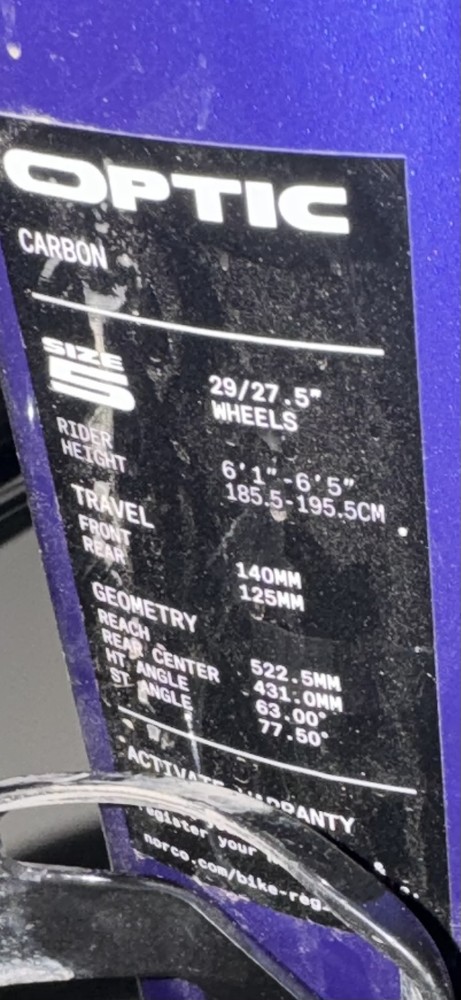
Build Kits
Norco is notorious for having some pretty sweet build kits, with the upper-end builds spec'd with components most riders would choose in the first place. They generally opt for what aftermarket components are popular among consumers rather than offering the basic in-house spec from top to bottom. Components like DMR Deathgrip grips, OneUp travel-adjustable dropper posts, wheelsets with aftermarket hub options, and even color options on suspension all create a customized feel right out of the box. On the flip side, they've done their best to ensure high-level spec features like good suspension, tires, and shifting trickle down across all builds. Both bikes are available in carbon and aluminum at a few different price points in full 29 and MX options. For the U.S. market, the Optic is available only in carbon as a complete while the Sight is offered in both carbon and aluminum. Frame-only options are available in carbon or aluminum for both bikes in the U.S.

Sight C1 MX - $7,499
An example of their outstanding product spec is showcased in the C1 level Sight, which comes with a nice set of Stan's Flow S2 rims laced to RaceFace Vault hubs wrapped in Maxxis Minion DHF and DHR II tires. The cockpit features a Deity Racepoint bar with DMR Deathgrip grips and an in-house Norco stem to save a few bucks without impacting the ride quality. SRAM covers shifting and stopping power with a GX AXS Transmission drivetrain and Code Stealth Silver brakes with 200mm front and 180mm rear rotor. Suspension is handled by a FOX Factory 36 fork and DHX2 out back with a Sprindex coil, allowing riders to fine-tune spring weight without having to buy multiple coils. Lastly, a 240mm OneUp dropper is used across multiple sizes and is something I was happy to see as a taller rider. Riders needing less drop can easily adjust travel down as needed. Overall, it is an incredibly well-thought-out spec that leaves little to be desired.
| Strengths | Weaknesses |
|---|---|
|
|
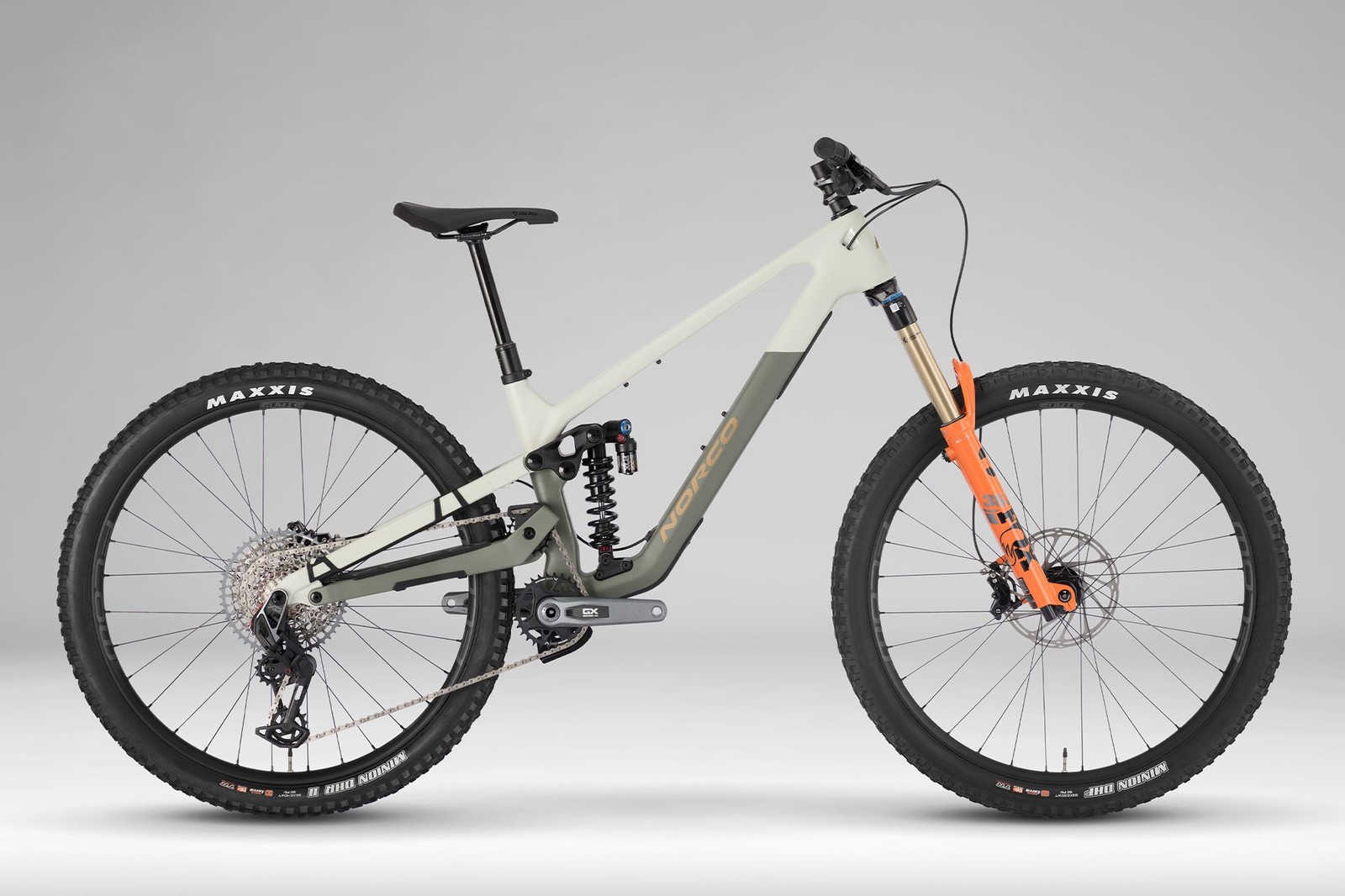

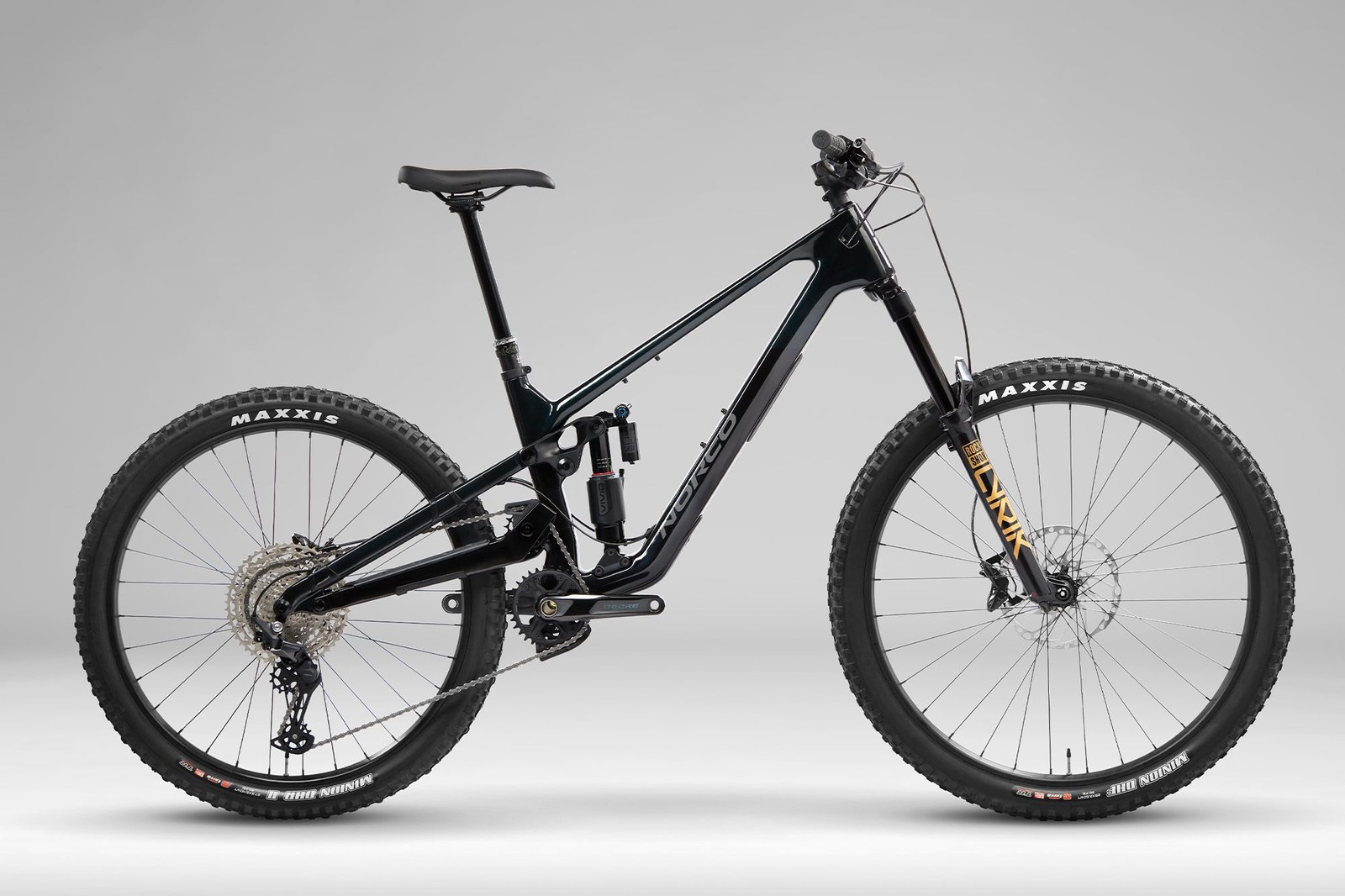

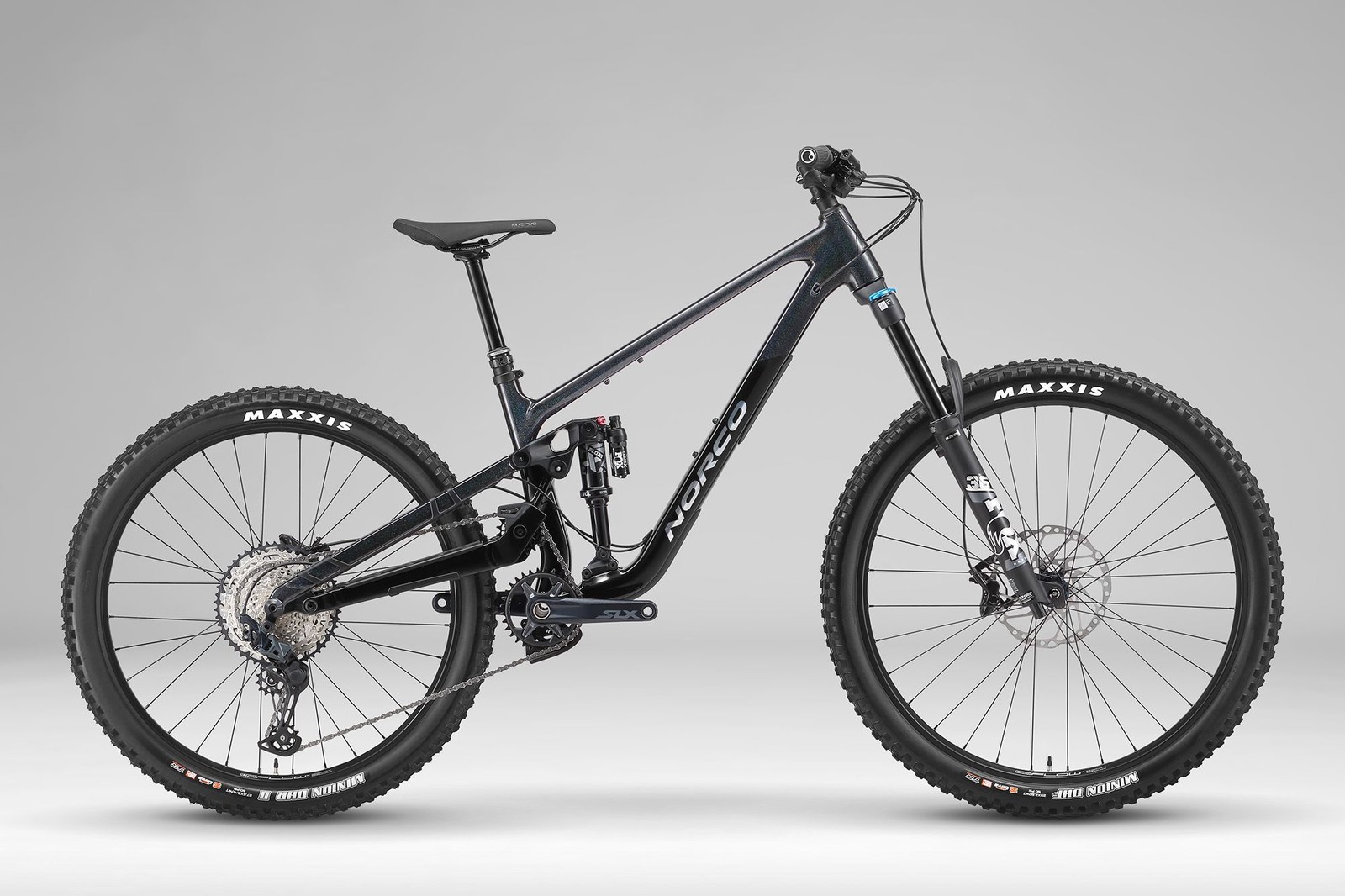
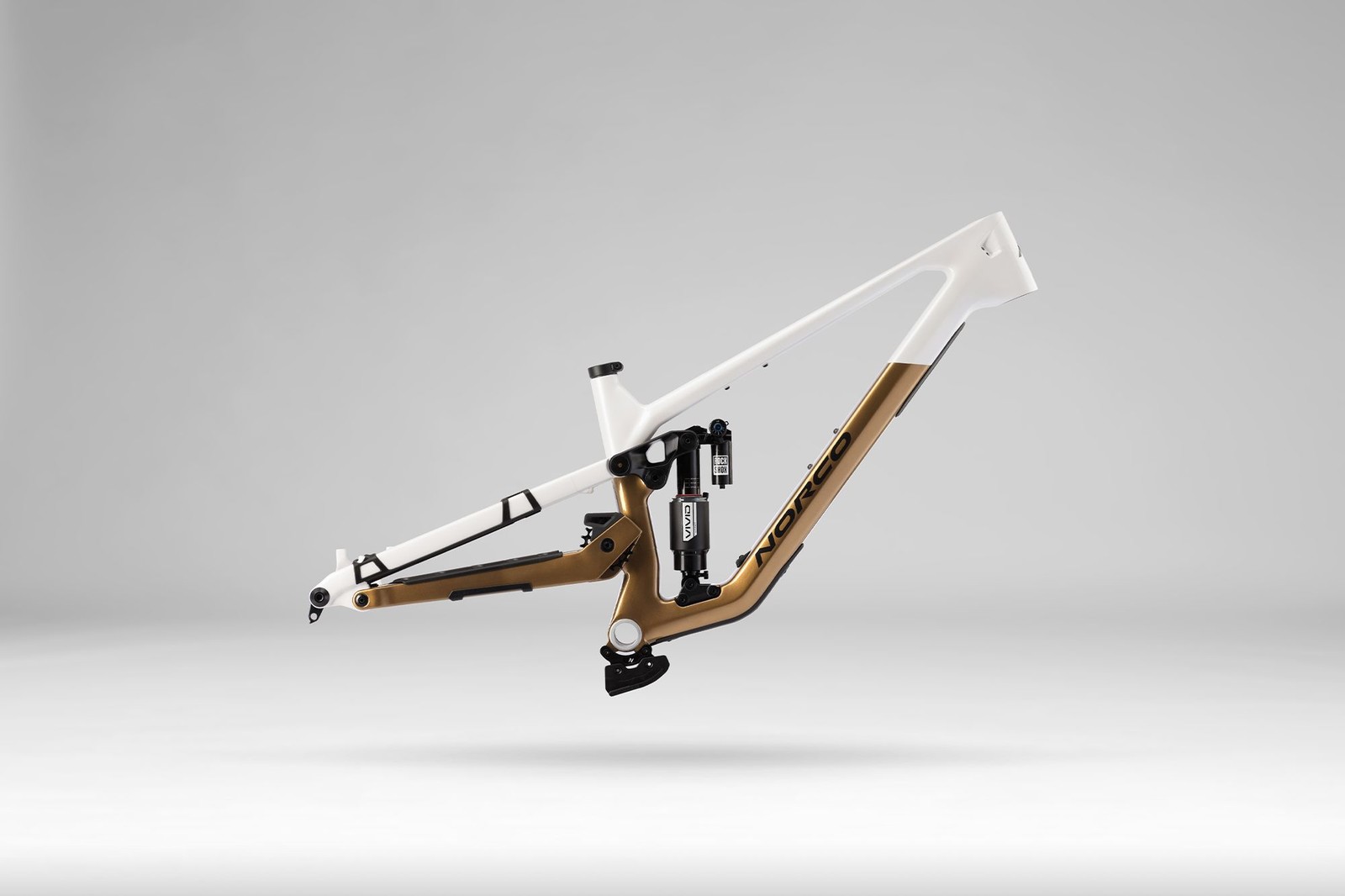


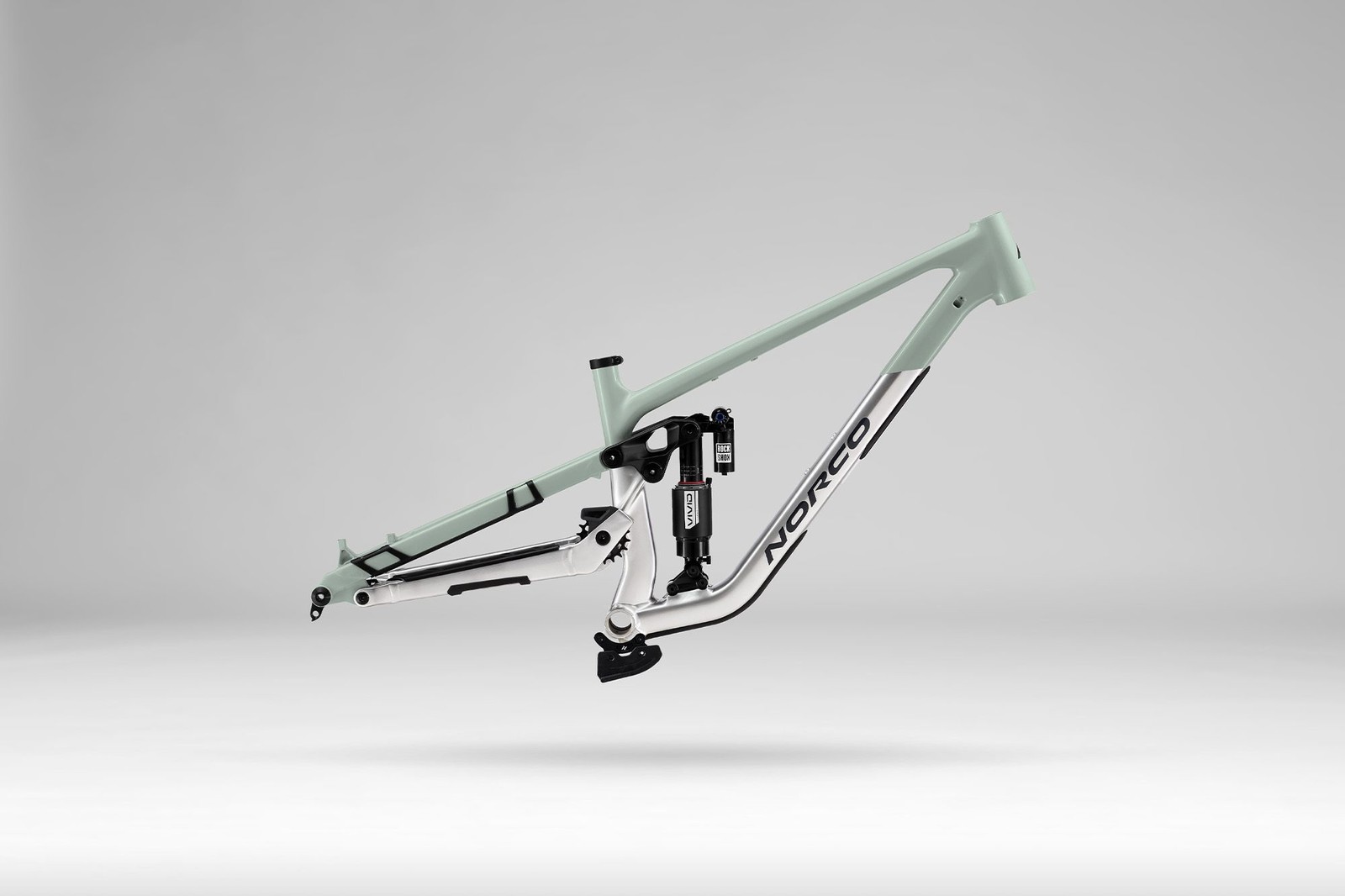
Optic C2 MX - $6,999
As for performance trickle-down, the C2-level Optic is a prime example of being more budget-friendly while eliminating the need to change much. Coming it at around $2,200 less than the C1 level Optic, the same Maxxis Minion DHRII and DHF combo are used, as is the SRAM GX AXS Transmission. Brakes bump down to SRAM Bronze level Code Stealth, which loses the pad contact adjustment from the Silver level but is still paired with 200/180mm rotors. RockShox Select+ level suspension is found front and rear in the form of a 140mm Lyrik, which only loses the Buttercup technology from the Ultimate, and a 185x50mm Vivid, which still features Hydraulic Bottom Out control. A 200mm TransX travel-adjustable dropper is used across most sizes, along with Norco's house-branded bar and stems to help bring the retail price down. While it may not be dream-build-worthy, the Optic C2 certainly features performance in all the right places.

| Strengths | Weaknesses |
|---|---|
|
|





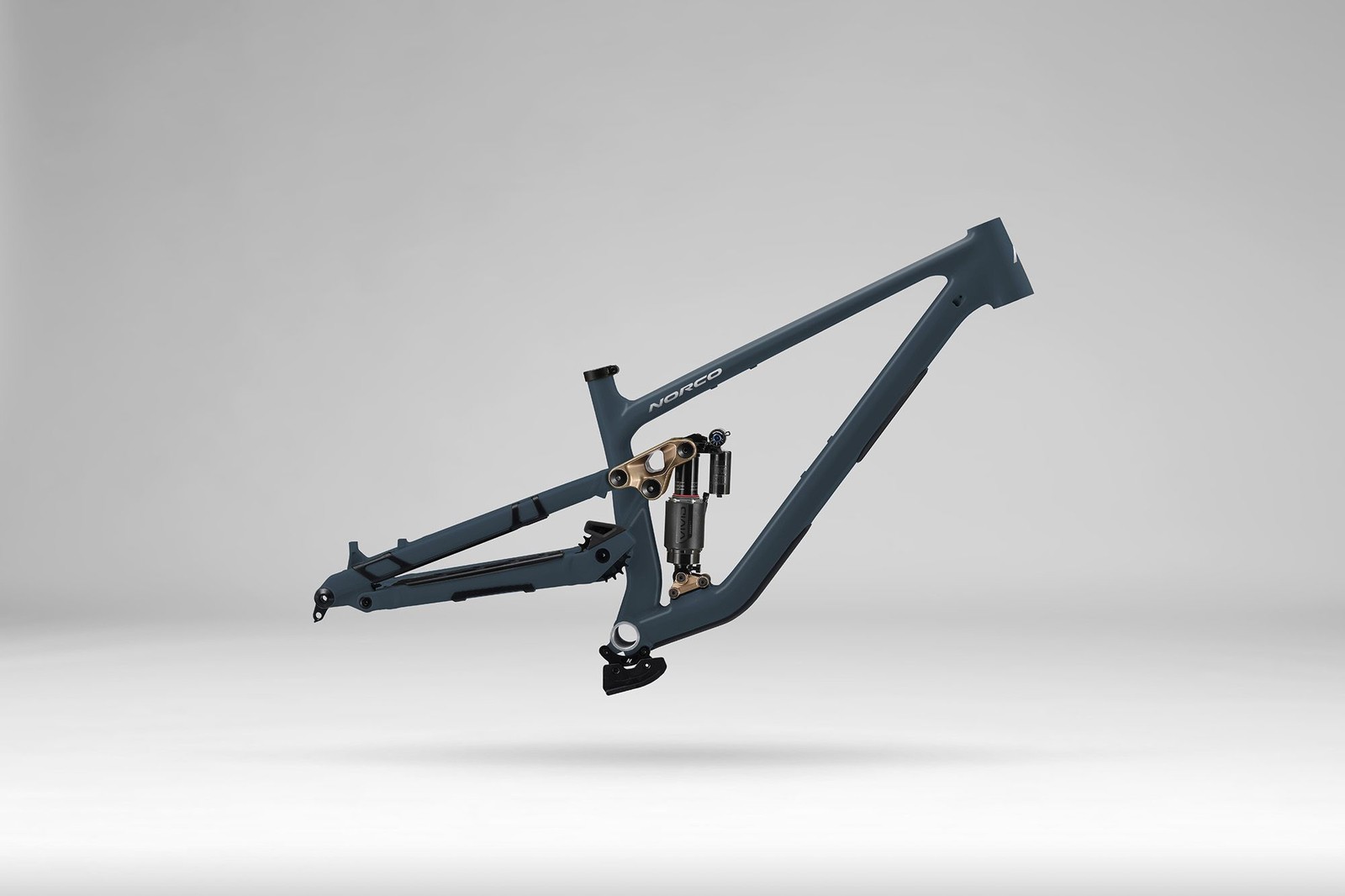

Ride Aligned Setup
Norco has one of the best bike setup guides available with their Ride Aligned System, and with this new run of bikes comes a new generation of Ride Aligned. Accessed through their website or via their app, the system makes setup intuitive and comprehensive for adjusting spring rates and damper settings. The updated version allows riders to select things like a more forward or rearward weight bias on the bike, select what level of traction their trails offer, or specify whether the terrain is more technical or flowy. The ability to save setup profiles for different locations is super handy when looking at the long-term use of either bike and can quickly get riders back to a comfortable setup when riding multiple terrain types.


But this is not just an update to what preferences riders can set and an improvement in convenience. The data supporting the suggested setups is also far more accurate than before, thanks to an in-house suspension dyno Norco has acquired since the last generation of Ride Aligned was introduced. Where they previously matched real-world data with manufacturers' setup guides to provide suggested settings, the dyno revealed bigger changes between clicks than what they had previously believed. Having used the prior Ride Aligned guide for suspension setup, the new version had fewer discrepancies from what I prefer and even provided some new settings that improved my riding experience.

I was pretty happy with the setup of both bikes as they arrived and only had to make small adjustments to feel comfortable. On the Optic, I felt slightly too far over the front of the bike and swapped to a taller stack height and taller 38mm rise Deity Blacklabel handlebar. The only major component issue I ran into was the 200mm dropper post needing to be set above the minimum insertion line for my preferred saddle height due to the short seat tube length. I did swap to a 29" rear wheel on both bikes because I struggled to maintain rear-wheel traction with the mixed setup. The rear wheel would build traction and then suddenly unload, making it tough to experience the full capabilities of the bikes.

On The Trail
While the anticipated benefit of my feet feeling glued to the pedals was present on both bikes, the glued-to-the-ground feeling associated with other high-pivot bikes was not. The idler does a great job eliminating most of the pedal kickback, and the amount tuned into the bikes is hardly noticeable across chatter aside from the support that builds while pumping and jumping. That being said, both bikes track over bumps incredibly well and absolutely corner on rails from ample rear wheel traction and well-balanced geometry.
The Optic is like the Fluid's older sibling who lifts weights for fun.



Optic
With the outgoing Optic essentially becoming the recently launched Fluid, where does the new Optic fit into Norco's lineup? The Optic is like the Fluid's older sibling who lifts weights for fun. On the trail, it feels lightweight and efficient, making popping off of side hits a common occurrence as it generates speed easily and rewards rider input. Norco did a great job increasing the capability of the Optic without losing track of its intended use.
Descending Performance: The Optic excels at holding it wide open across mellower terrain but is just as comfortable tackling aggressive descents, with balanced traction on both wheels. It just requires a more thoughtful approach to technical terrain and delivers a more lively ride than a bike with more travel. Considering its travel amount, the square-edge bump performance was rather impressive, but there is a good amount of feedback through the pedals. This feedback isn't as much of a drawback when considering it is part of how Norco has preserved the qualities that make a short-travel trail bike fun to ride. The Optic punches well above its weight class while maintaining the ability to jump and skip over sections that would otherwise result in a violent bottom-out experience.
Pedaling Performance: The seated pedaling position is nice and upright, allowing for a range of cadence with relatively minimal effort. Power transfer from the pedals feels direct, with a slight loss of energy at a higher cadence from the idler. The Optic gets up and goes under hard acceleration when sprinting and easily gains speed. The benefits of the idler are less apparent on the Optic because it already does a great job of maximizing pedal efficiency.
| Strengths | Weaknesses |
|
|

Sight
Where the Optic started to reach its limit in the rough stuff, the Sight was just getting started. The downhill performance is a standout characteristic, but a supportive suspension platform helps create a light feeling on the trail that makes tackling the gnarliest terrain feel easy. Having ridden the Range, the Sight will have you questioning why you would ever need more travel outside of a downhill race track.
Where the Optic managed to soften square edge hits, the Sight seemed to delete them altogether.
Descending Performance: The suspension is super light off the top but has a consistent ramp-up to keep from blowing through the travel. Where the Optic managed to soften square edge hits, the Sight seemed to delete them altogether, and traction was ample. This meant pumping and jumping required larger undulations to be beneficial, but the ability to hold and generate momentum remained consistent. It is not the most energetic, light-footed bike I have ridden. It's a bigger bike and rides that way on the trail. The axle path is slightly more rearward than the Optic, and the longer travel really helps drive the bike forward across the roughest terrain.
Pedaling Performance: The pedaling position of the Sight is also fairly upright, and my body position felt slightly forward from center. The highly active rear suspension benefited uphill performance by creating a surprisingly efficient pedaling bike that helped maintain a consistent cadence across undulations of all sizes. While a fair amount of pedal bob is present in higher gears, the anti-squat characteristics from the idler pulley eliminate any drawbacks in lower gears.
| Strengths |
Weaknesses |
|
|

What's The Bottom Line?
Norco has done a great job elevating the baseline capabilities of the Sight and Optic through their no-compromise approach to suspension, progression in geometry, and simplifying suspension setup. They have successfully grown the intended use of both bikes without detracting from what makes them great trail and all-mountain bikes. With such dialed-build kit options at various price points, the biggest decision is choosing which bike best meets your needs. The Optic is a great bike for keeping mellower terrain fun and feeling limitless on ripping singletrack. The bike rewards rider input and generates speed with ease through turns and undulations while holding its own in the rough stuff. The Sight is nearly the opposite; it thrives in the rough and eggs you on to brake a little later into every corner. It builds speed a little slower but can hold momentum incredibly well, which made me feel like I could push into the gnarliest terrain. The response was an effortless ride experience so long as the bike's dimensions weren't holding it back. The Optic required more input and intention with line choice, but the result was very rewarding. I think with a bit more time, I can get the Optic set up a little more closely to the Sight, and it should creep nearer to a best-of-both-worlds experience. If I was choosing to keep only one bike in my garage, it would be the Sight for its consistent feeling across a variety of terrain. Because I own a bike with more travel, I'll be holding on to the Optic to see what kind of performance can be unlocked out of the short-travel package. Stay tuned for a long-term review of the Optic, where we will compare it to another high-pivot short-travel bike later this year.
For more information, please visit norco.com
View key specs and compare 2024 Norco bikes side by side in the Product section.
Select 2024 Norco bikes are available now at Jenson USA.
About The Tester
Jonathon Simonetti - Age: 30 // Years Riding MTB: 21 // Height: 6’4” (1.93m) // Weight: 230-pounds (97.5kg)
Jonny started mountain biking in 2003 after a trip to Northstar showed him how much more could be ridden on 26” wheels than on a BMX bike. He began racing downhill in 2004 and raced for 12 years until ultimately deciding having fun on a bike was more important than race results. After working as a mechanic in the industry for a few years and developing a deeper understanding of bikes inside and out, he has an aptitude for pairing his riding ability with the analysis of bikes and breaking down what makes them work well. He spends most of his time between trail rides and skatepark sessions, with occasional days on the downhill bike.
Specifications
Rear: Maxxis Minion DHR II, 3C MaxxTerra compound, EXO+ casing, TR, folding, 27.5" x 2.4” WT
Drop: 150mm (size 1), 180mm (size 2), 210mm (sizes 3/4), 240mm (size 5)
• Mixed ("Mullet") wheels: 29" front, 27.5" rear
• Norco Ride Aligned Design System
• Includes app-based Ride Aligned Setup Guide with rider-specific suspension, cockpit, and tire pressure suggestions
• Internal cable routing with internal guide tubes
• SRAM UDH (Universal Derailleur Hanger)
• Compatible with 29" rear wheel via Missing Link Kit
• Frame weight: 3.2 kg (6.9 lbs)
• Canadian price: 9999 CAD
| Where To Buy | |||
|---|---|---|---|
Free shipping on orders over $50 (continental U.S. only).
International shipping available. Some exclusions apply. |
|||
Free shipping on orders over $50 (continental U.S. only).
International shipping available. Some exclusions apply. |
|||









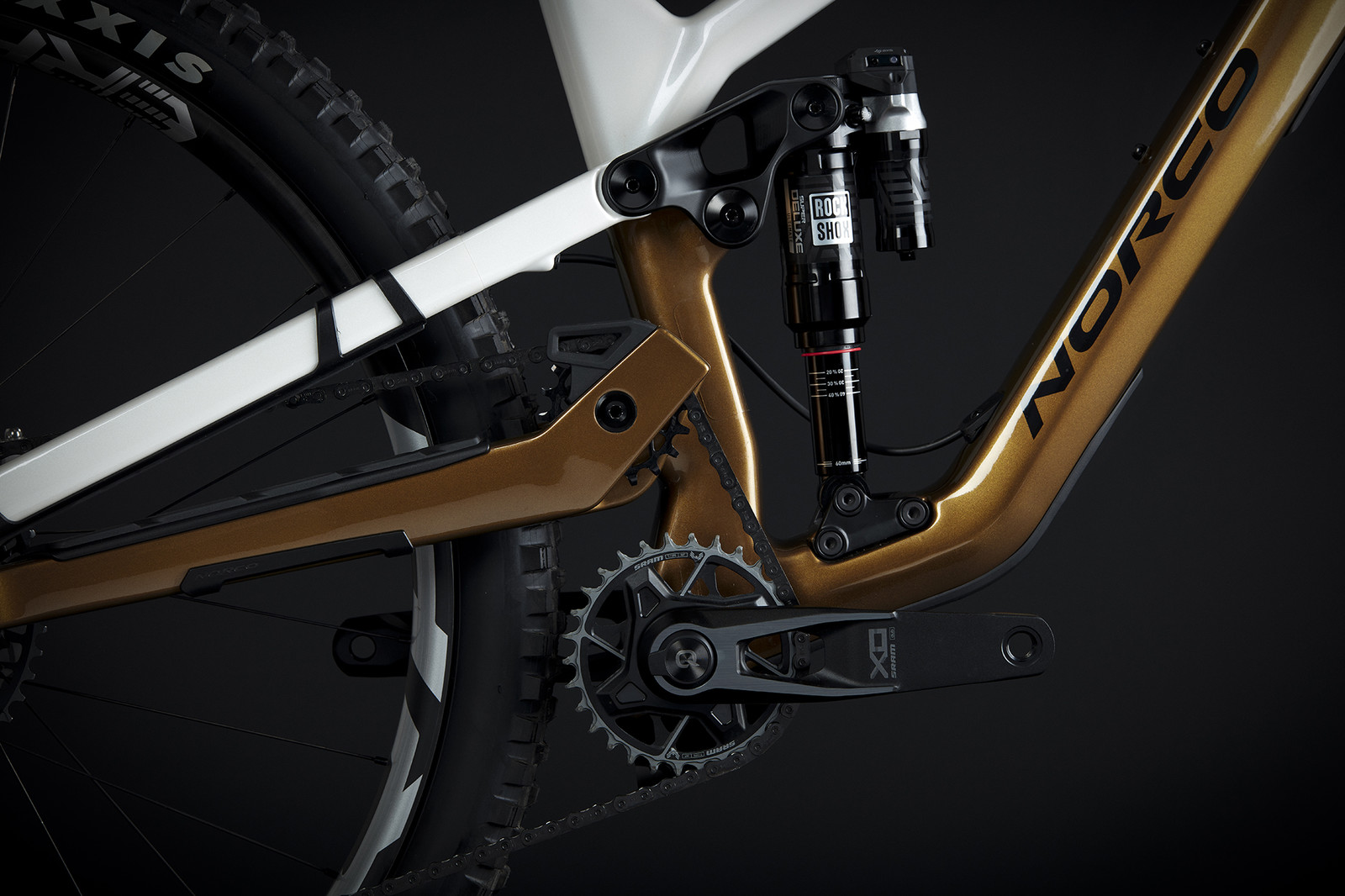
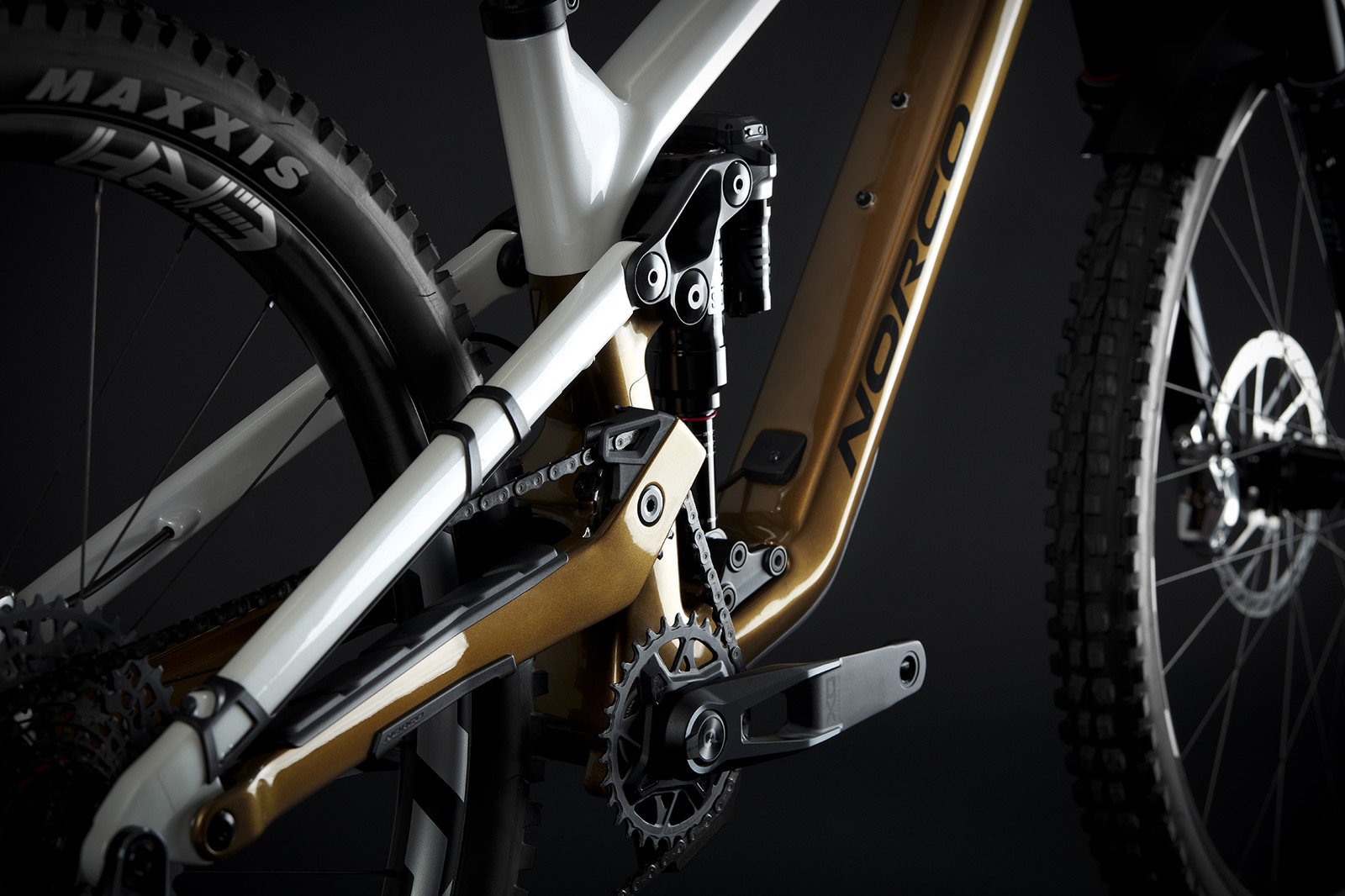
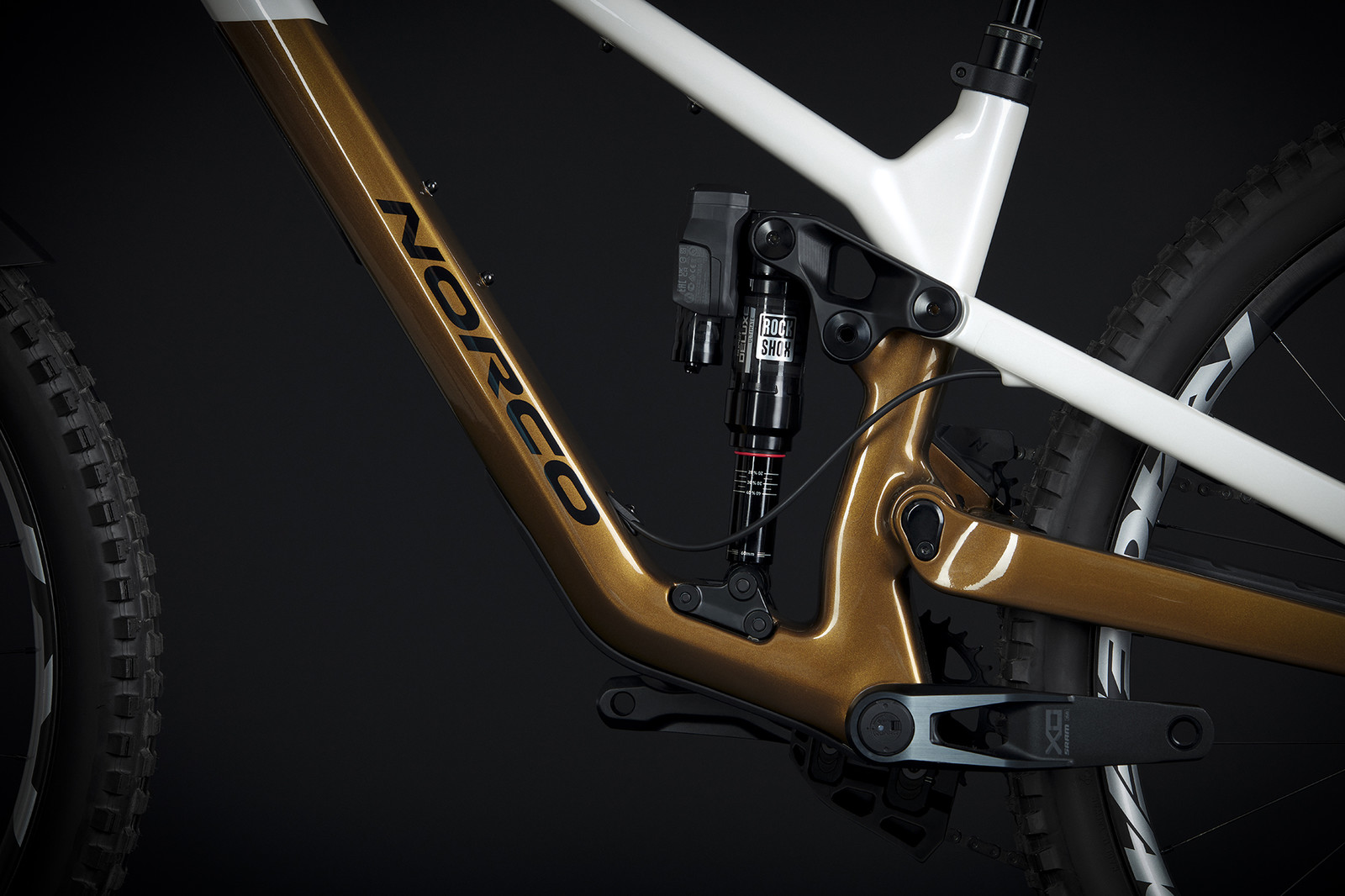

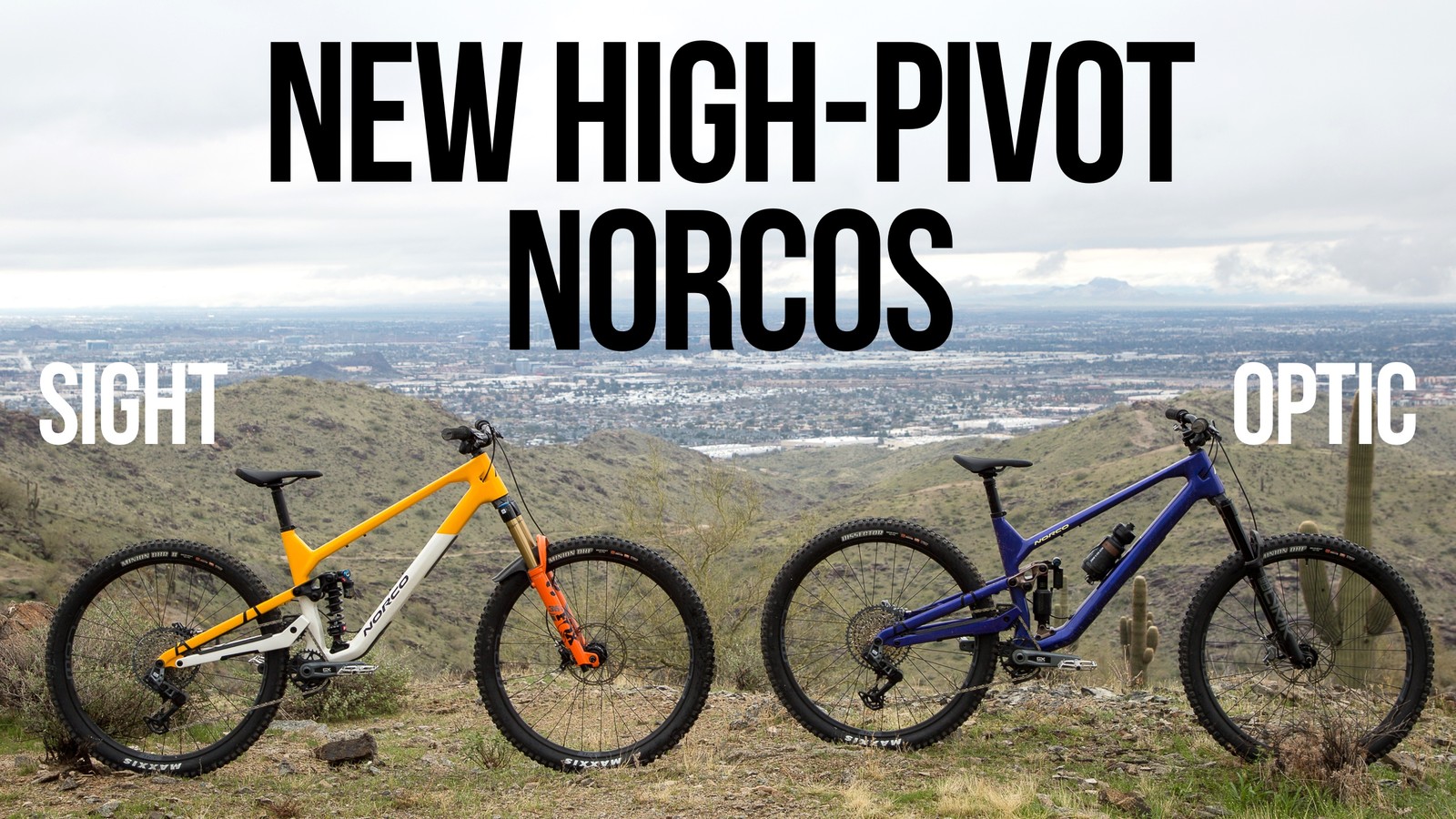



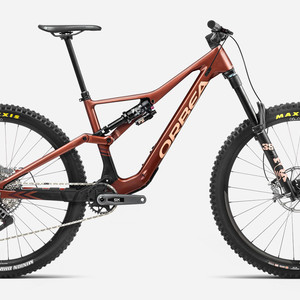

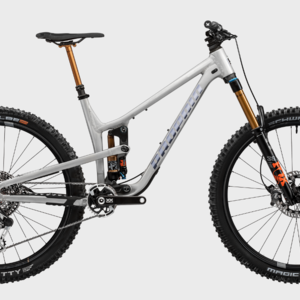

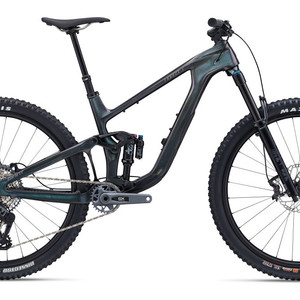












25 comments
Post a reply to: FIRST RIDE - 2024 Norco Optic and Sight